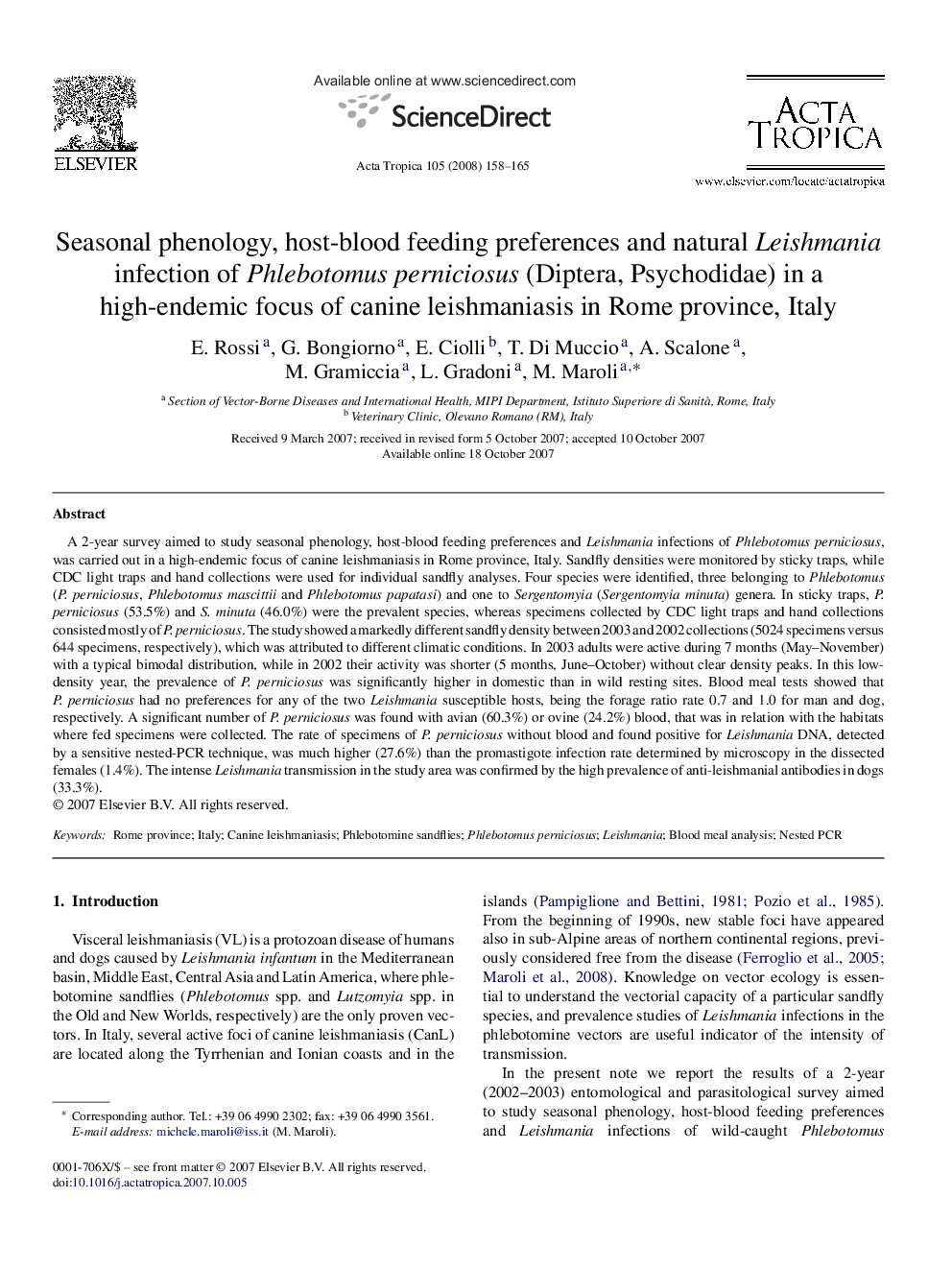| Article ID | Journal | Published Year | Pages | File Type |
|---|---|---|---|---|
| 3394509 | Acta Tropica | 2008 | 8 Pages |
A 2-year survey aimed to study seasonal phenology, host-blood feeding preferences and Leishmania infections of Phlebotomus perniciosus, was carried out in a high-endemic focus of canine leishmaniasis in Rome province, Italy. Sandfly densities were monitored by sticky traps, while CDC light traps and hand collections were used for individual sandfly analyses. Four species were identified, three belonging to Phlebotomus (P. perniciosus, Phlebotomus mascittii and Phlebotomus papatasi) and one to Sergentomyia (Sergentomyia minuta) genera. In sticky traps, P. perniciosus (53.5%) and S. minuta (46.0%) were the prevalent species, whereas specimens collected by CDC light traps and hand collections consisted mostly of P. perniciosus. The study showed a markedly different sandfly density between 2003 and 2002 collections (5024 specimens versus 644 specimens, respectively), which was attributed to different climatic conditions. In 2003 adults were active during 7 months (May–November) with a typical bimodal distribution, while in 2002 their activity was shorter (5 months, June–October) without clear density peaks. In this low-density year, the prevalence of P. perniciosus was significantly higher in domestic than in wild resting sites. Blood meal tests showed that P. perniciosus had no preferences for any of the two Leishmania susceptible hosts, being the forage ratio rate 0.7 and 1.0 for man and dog, respectively. A significant number of P. perniciosus was found with avian (60.3%) or ovine (24.2%) blood, that was in relation with the habitats where fed specimens were collected. The rate of specimens of P. perniciosus without blood and found positive for Leishmania DNA, detected by a sensitive nested-PCR technique, was much higher (27.6%) than the promastigote infection rate determined by microscopy in the dissected females (1.4%). The intense Leishmania transmission in the study area was confirmed by the high prevalence of anti-leishmanial antibodies in dogs (33.3%).
